 |
 |
 |
| Schlenk line used for distilling or degassing solvents and preparing air-free samples. |
Preparatory bench-top. This side of the wet lab houses a lot of the glassware, the sink, sonicator, balance, and etc. A zone of yellow overhead lighting helps to prevent photosensitive samples from absorbing shorter wavelengths of visible light that would hasten their degradation. |
The other side of the wet lab with more technical equipment. Shown are several mechanical pumps, a power supply, voltmeters, a large peristaltic pump, heating/stir plates, and a drying oven. |
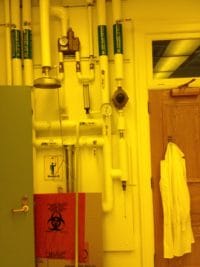 |
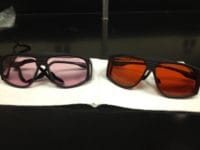 |
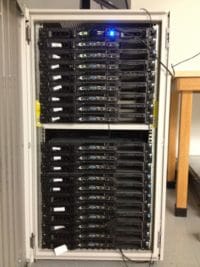 |
| Safety shower! |
Safety glasses used in the laser lab. Glasses with a pink tint (left) are used to block stray light near 800 nm, the main wavelength of the Ti:Sapphire laser used in our lab. Glasses with an orange tint (right) block the 532 nm light output by pump lasers in the oscillator and amplifier. |
Servers used to run supportive electronic structure calculations. |
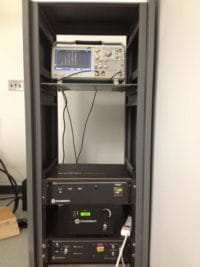 |
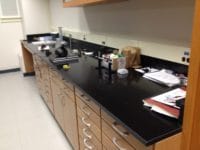 |
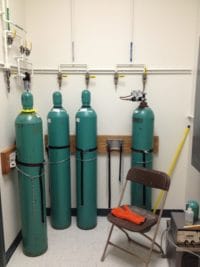 |
| On top of this electronics rack is an oscilloscope used primarily for equipment diagnostics. The bottom houses controllers for various components of the laser system. |
Storage area for optical components and safety equipment in the laser lab. |
“Tank farm” for centralized distribution of lab gases (primarily nitrogen and argon). |
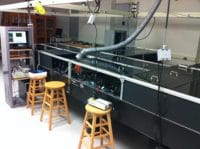 |
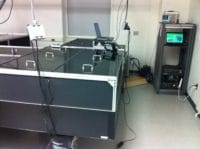 |
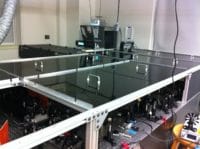 |
| The three pictures above show various views from around the laser lab. |
Another angle of the laser table. |
A display of the primary translation stage and white light generation set-up underneath the table covers. |
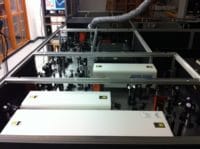 |
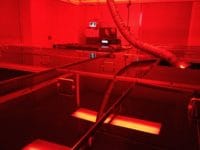 |
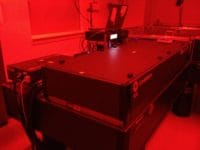 |
| A view of the picosecond OPA, the SHBC and TOPAS (bottom), a delay box (middle), and the femtosecond OPA (top) used to generate pump pulses of different visible and IR wavelengths. |
Laser lab illuminated with red lights – valuable when working with light-sensitive samples or detectors. |
The oscillator (left) and amplifier (right) used to generate high-power ultrafast (~35 fs) laser pulses at 800 nm. |
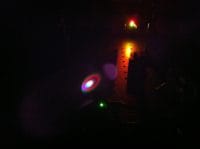 |
 |
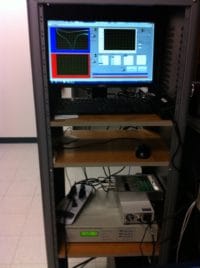 |
| White light generated by focusing 800 nm light into a Sapphire crystal. |
An view of a Labview-based data acquisition program designed by members of our group. Various spectra are collected simulatenously, and as seen in the picture, several can be plotted and compared during collection to monitor sample consistency and trends within the data. |
Various electronics used to control different parts of the data collection set-up. The bottom houses the primary computer, translation stage and chopper controllers, and the DAQ board, while the top contains the computer display and controls for the camera and spectrometer. |